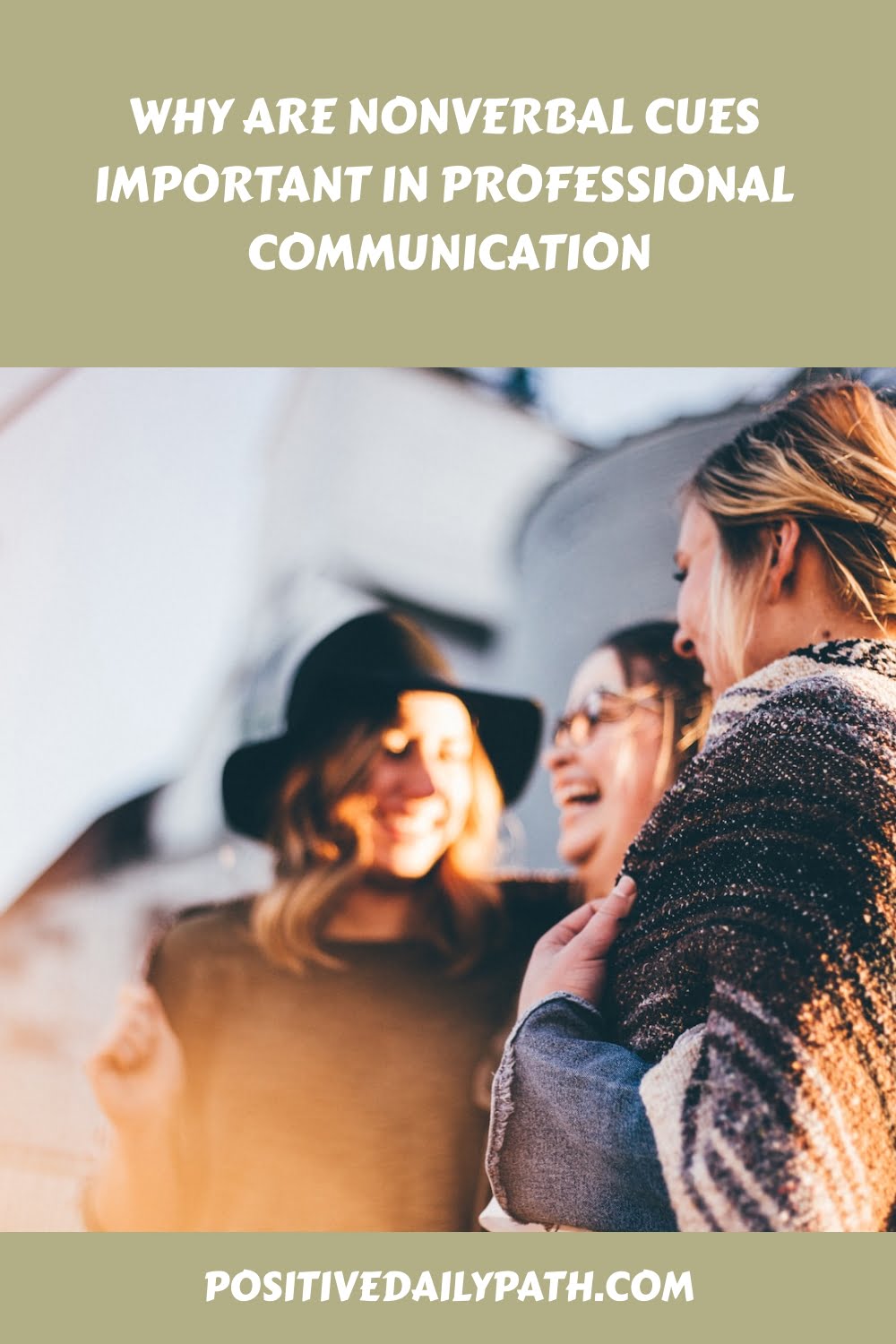Did you know that over 90% of communication is nonverbal? That means your body language, facial expressions, and gestures speak louder than your words in professional settings. Understanding and utilizing nonverbal cues can greatly enhance your communication skills and help you succeed in the workplace. From conveying confidence and establishing trust to avoiding misunderstandings, nonverbal cues play a crucial role in building strong professional relationships. In this article, we will explore why nonverbal cues are vital in professional communication and how you can leverage them to your advantage.
Key Takeaways
- Nonverbal cues enhance message clarity and understanding by paying attention to specific cues and improving delivery techniques.
- Nonverbal cues are essential in conveying emotions, establishing rapport, and influencing audience perception of credibility and authenticity.
- Nonverbal cues play a vital role in building trust and influencing perceptions by maintaining good eye contact, open body language, and appropriate facial expressions.
- Nonverbal cues in leadership and authority include body language, strong presence, good posture, open gestures, and calm facial expressions.
Enhancing Message Clarity and Understanding
To enhance message clarity and understanding in professional communication, pay attention to the specific nonverbal cues that you are using. Improving your delivery techniques and nonverbal communication skills can greatly impact how your message is received and understood by others.
When it comes to delivering your message effectively, it's important to consider not only the words you speak but also how you convey them through your nonverbal cues. Your body language, facial expressions, and tone of voice all play a crucial role in delivering your message with clarity and understanding.
First, let's talk about body language. Maintaining an open and relaxed posture can help create a sense of trust and openness between you and your audience. Avoid crossing your arms or fidgeting, as these gestures can signal defensiveness or nervousness. Instead, stand tall, make eye contact, and use appropriate gestures to emphasize key points.
Next, let's focus on facial expressions. Your face is a powerful tool for conveying emotions and attitudes. Smile genuinely when appropriate, as it can help create a positive and engaging atmosphere. Maintain good eye contact to show that you are attentive and interested in the conversation.
Lastly, pay attention to your tone of voice. Use a clear and confident tone that matches the content of your message. Avoid speaking too quickly or softly, as this can lead to misunderstanding or lack of interest from your listeners. Practice speaking at a moderate pace and volume, ensuring that your voice carries across the room.
Conveying Emotions and Establishing Rapport
When conveying emotions and establishing rapport in professional communication, it is important to use nonverbal cues effectively. Nonverbal cues play a vital role in negotiations and public speaking, as they can help you connect with others on a deeper level and create a sense of trust and understanding.
In negotiations, nonverbal cues can convey your confidence, interest, and sincerity. Maintaining eye contact, using open body language, and nodding your head can show that you are actively listening and engaged in the conversation. These gestures can help build rapport with your counterparts and facilitate a more productive and collaborative negotiation process.
Similarly, in public speaking, nonverbal cues can enhance your message and captivate your audience. Using appropriate facial expressions, hand gestures, and body movements can convey your emotions and make your speech more compelling and relatable. Your nonverbal cues can also influence how your audience perceives your credibility and authenticity as a speaker.
Influencing Perceptions and Building Trust
Nonverbal cues are essential in professional communication for influencing perceptions and building trust. In negotiations and persuasion, your nonverbal cues can greatly impact how others perceive you and the message you're conveying. For example, maintaining good eye contact, using appropriate facial expressions, and having open body language can demonstrate confidence, credibility, and sincerity. These nonverbal cues can help you build trust with your counterparts and increase the likelihood of reaching mutually beneficial agreements.
Similarly, nonverbal cues play a crucial role in networking and relationship building. When meeting new people or strengthening existing connections, your body language, gestures, and tone of voice can convey your interest and engagement. A warm smile, a firm handshake, and active listening can help establish rapport and make others feel valued and respected. By being mindful of your nonverbal cues, you can create a positive and inviting atmosphere that encourages open communication and fosters trust.
Nonverbal Cues in Leadership and Authority
In professional communication, your body language and nonverbal cues can convey leadership and authority. When you have a strong leadership presence, it can inspire confidence and trust in those around you. Your authoritative body language speaks volumes about your competence and ability to lead.
To convey leadership presence, stand tall with good posture and maintain eye contact with others. This shows that you are confident and engaged. Use open gestures, such as open palms and expansive arm movements, to demonstrate your openness and willingness to listen. These gestures also help to establish a sense of authority.
Your facial expressions also play a crucial role in conveying leadership and authority. A calm and focused expression can make others feel reassured and confident in your abilities. Avoid fidgeting or excessive movement, as it can convey nervousness or uncertainty.
Remember to speak with a clear and assertive tone, which further reinforces your leadership presence. Avoid using filler words or speaking too quickly, as it can undermine your authority. Take pauses and speak at a moderate pace to convey confidence and thoughtfulness.
Avoiding Misinterpretation and Conflict
To avoid misinterpretation and conflict, it is crucial to pay attention to the subtle cues conveyed through others' nonverbal communication. In negotiation, nonverbal cues can often provide valuable insights into the other person's thoughts, feelings, and intentions. For example, their body language, facial expressions, and tone of voice can reveal if they are open to compromise or if they are becoming defensive. By being attuned to these cues, you can adjust your approach accordingly, fostering a more productive and positive negotiation process.
Similarly, in team collaboration, nonverbal cues can play a significant role in avoiding miscommunication and conflict. People express themselves not only through words but also through their gestures, posture, and eye contact. By paying attention to these cues, you can better understand your team members' perspectives, emotions, and levels of engagement. This understanding can help you adapt your communication style, ensuring that your messages are received and interpreted accurately.
To enhance your ability to read nonverbal cues and avoid misinterpretation, it is important to practice active listening and empathy. By truly listening to others and trying to understand their nonverbal cues, you can build stronger connections and foster a more harmonious and collaborative work environment. Additionally, being aware of your own nonverbal cues and how they may be perceived by others is vital in promoting clear and effective communication.




